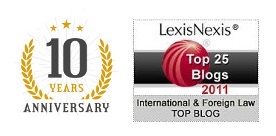Wayne Beynon, one of a team of IP lawyers at Capital Law, investigates how the virality of modern day music videos and songs is changing the direction of copyright law for music rights holders.
We’re all aware of the short lived viral music trends that sweep the internet, spawning new dance routines, hashtags and even a new vernacular in their wake.
In 2012 it was the turn of Psy, the Korean popstar whose Gangnam Style became a global phenomenon, the video of which has been viewed almost 1.6 billion times on YouTube at the last count. Hundreds of thousands of Gangnam Style homage videos have been posted to YouTube since Psy-mania took over.
In early 2013 it was Harlem Shake time. The Harlem Shake is a popular dance track which has been used by countless people, businesses and organisations to post video footage on YouTube in which a group of people perform a comedy sketch accompanied by a short excerpt from the song “Harlem Shake”. More than 4,000 videos featuring the words “Harlem Shake” were being posted per day to YouTube during the peak of the mania in early February, and new versions continue to be posted daily.
The unexpected success of Harlem Shake caused the Billboard chart to bring forward its plans to account for YouTube views when determining its Billboard Hot 100 chart. This is an important acknowledgement that YouTube now plays a vital role in shaping cultural trends, defining the hits ahead of radio programmers. As a consequence of this change, Harlem Shake made its debut at No.1 on the Billboard Hot 100 on February 21, 2013. Without the adoption of the YouTube metrics the song would have debuted in the Top 15.
The success of Harlem Shake also highlights a change of direction for music rights holders. Just a few years ago, music copyright and IP lawyers would have attempted to shut down the Harlem Shake craze before it really got going (those in the know may remember Viacom’s 2007 lawsuit against Google for allowing copyright-violating videos to spread across YouTube). However, these days canny content creators (including the folk behind Gangnam Style and Harlem Shake) are working with YouTube to identify copyright-violating material and instead of deleting it, they’re monetising it.
Jasper Collins, the manager of the label behind Gangnam Style has said: “We’ve from the beginning been very much a proponent of allowing everybody to do whatever they want with our stuff, as long as we are able to monetise it”. And thanks to YouTube’s Content ID system they can. And it’s this very same Content ID system that stops individuals, businesses and brands getting sued when they upload they own Gangnam Style/Harlem Shake videos to YouTube.
Some background might be useful here: The YouTube Content ID system automatically trawls its servers looking for copies of copyrighted materials that its owners have asked to be protected. Videos are flagged if they include a song registered with Content ID (this covers any reference to a song/track in the post listing). The copyright owners can then have these copies removed from YouTube, do nothing, or (if they qualify) have ads sold against the videos for potentially serious levels of monetisation (Gangnam Style is said to have made Psy upwards of $2 million in YouTube advertising revenues alone).
Thanks to Content ID, the copyright owners of Harlem Shake were extremely well positioned to immediately begin profiting when the craze began to take hold at the start of February. After all, it was a manufactured phenomenon that was distributed with virality and content monetisation firmly in mind.
So when the likes of Manchester United or Cardiff Blues do their own take on the Shake then the label behind the track gets ad revenue, as does YouTube. However, the thousands of amateur fans and organisations shooting their own video footage receive nothing because they are using copyrighted content. In traditional copyright circles, such action would have placed them on the receiving end of a copyright infringement claim, however, thanks to YouTube’s Content ID system, their videos are being monitored by the copyright owners in order to be monetised.
However, as with most things in life this isn’t an exact science. Just because a song owner uses Content ID it doesn’t necessarily immunise them from copyright infringement. Generally the average man on the street is in no danger of infringing copyright after posting a Gangnam Style/Harlem Shake spoof on YouTube, however, if a firm or high profile individual makes their own video for marketing and PR purposes outside of the YouTube Content ID system then that comes with a much higher risk factor.
A case in point is the rapper Azealia Banks who rapped over Harlem Shake and posted it on SoundCloud, prompting the record company to have it removed and initiating a Twitter spat between the two parties.
By and large the YouTube Content ID system has allowed record labels and content producers to adopt an ad-hoc approach to music licensing that can be adapted to suit their individual needs. In this new copyright age whether they choose to maintain the traditionalist approach to licensing, or embrace the virality of the internet (and the potential monetisation rewards it can bring) is entirely up to them.


 12+ years sharing great legal advice
12+ years sharing great legal advice
